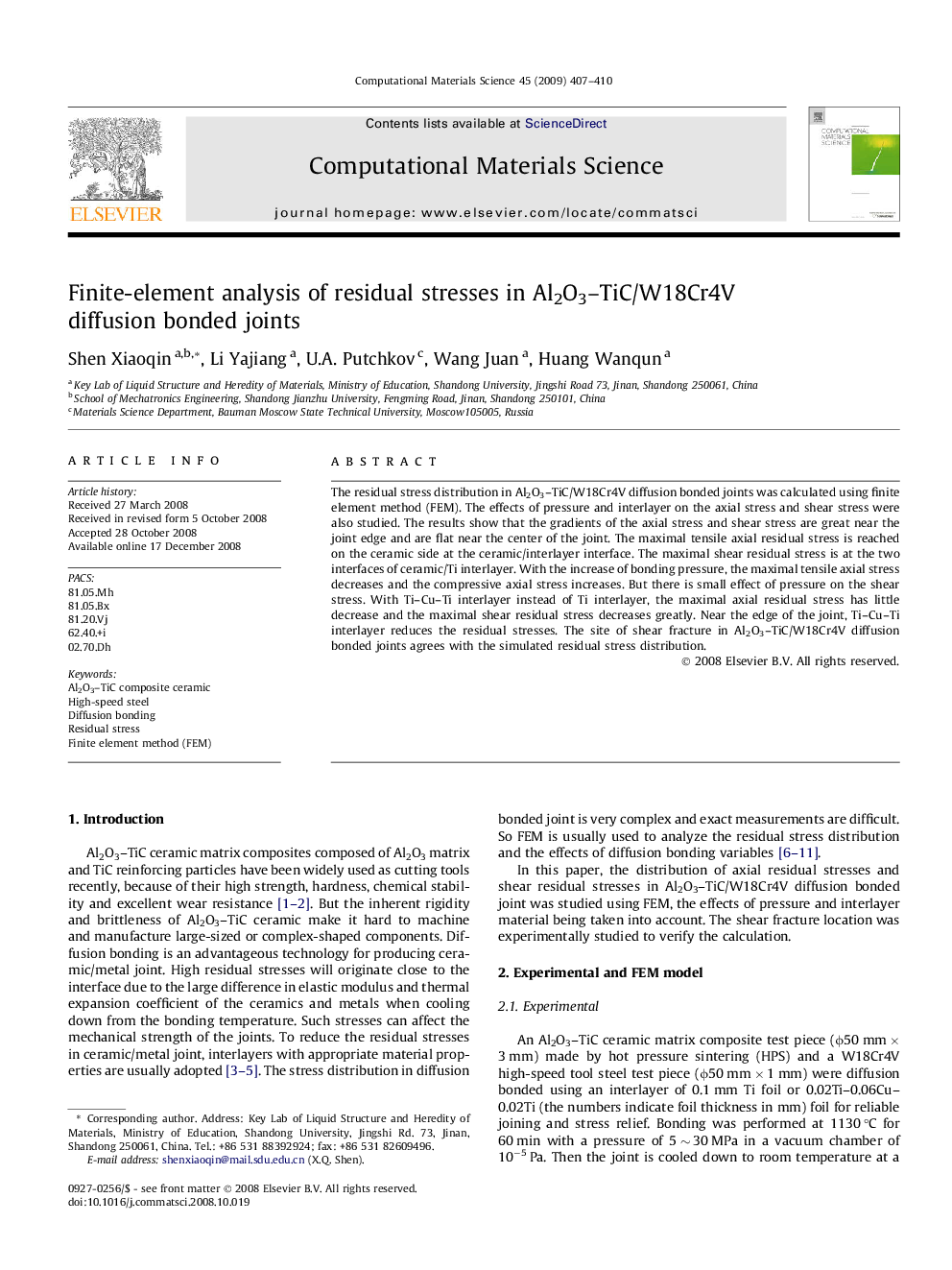| Article ID | Journal | Published Year | Pages | File Type |
|---|---|---|---|---|
| 1563414 | Computational Materials Science | 2009 | 4 Pages |
The residual stress distribution in Al2O3–TiC/W18Cr4V diffusion bonded joints was calculated using finite element method (FEM). The effects of pressure and interlayer on the axial stress and shear stress were also studied. The results show that the gradients of the axial stress and shear stress are great near the joint edge and are flat near the center of the joint. The maximal tensile axial residual stress is reached on the ceramic side at the ceramic/interlayer interface. The maximal shear residual stress is at the two interfaces of ceramic/Ti interlayer. With the increase of bonding pressure, the maximal tensile axial stress decreases and the compressive axial stress increases. But there is small effect of pressure on the shear stress. With Ti–Cu–Ti interlayer instead of Ti interlayer, the maximal axial residual stress has little decrease and the maximal shear residual stress decreases greatly. Near the edge of the joint, Ti–Cu–Ti interlayer reduces the residual stresses. The site of shear fracture in Al2O3–TiC/W18Cr4V diffusion bonded joints agrees with the simulated residual stress distribution.
